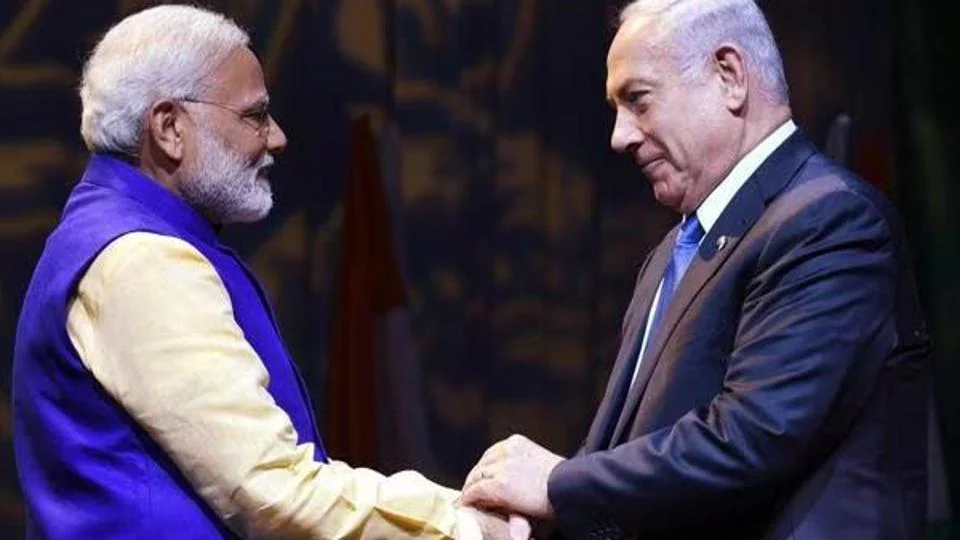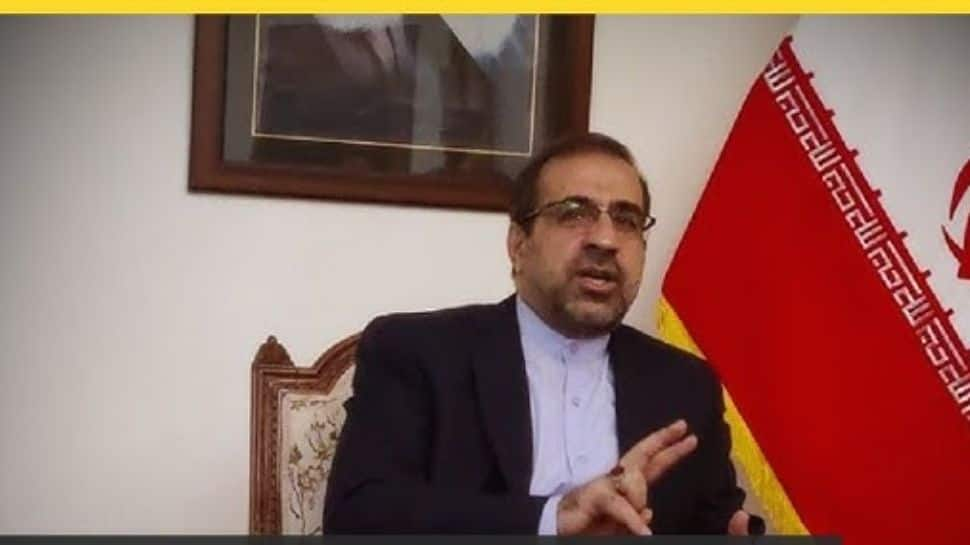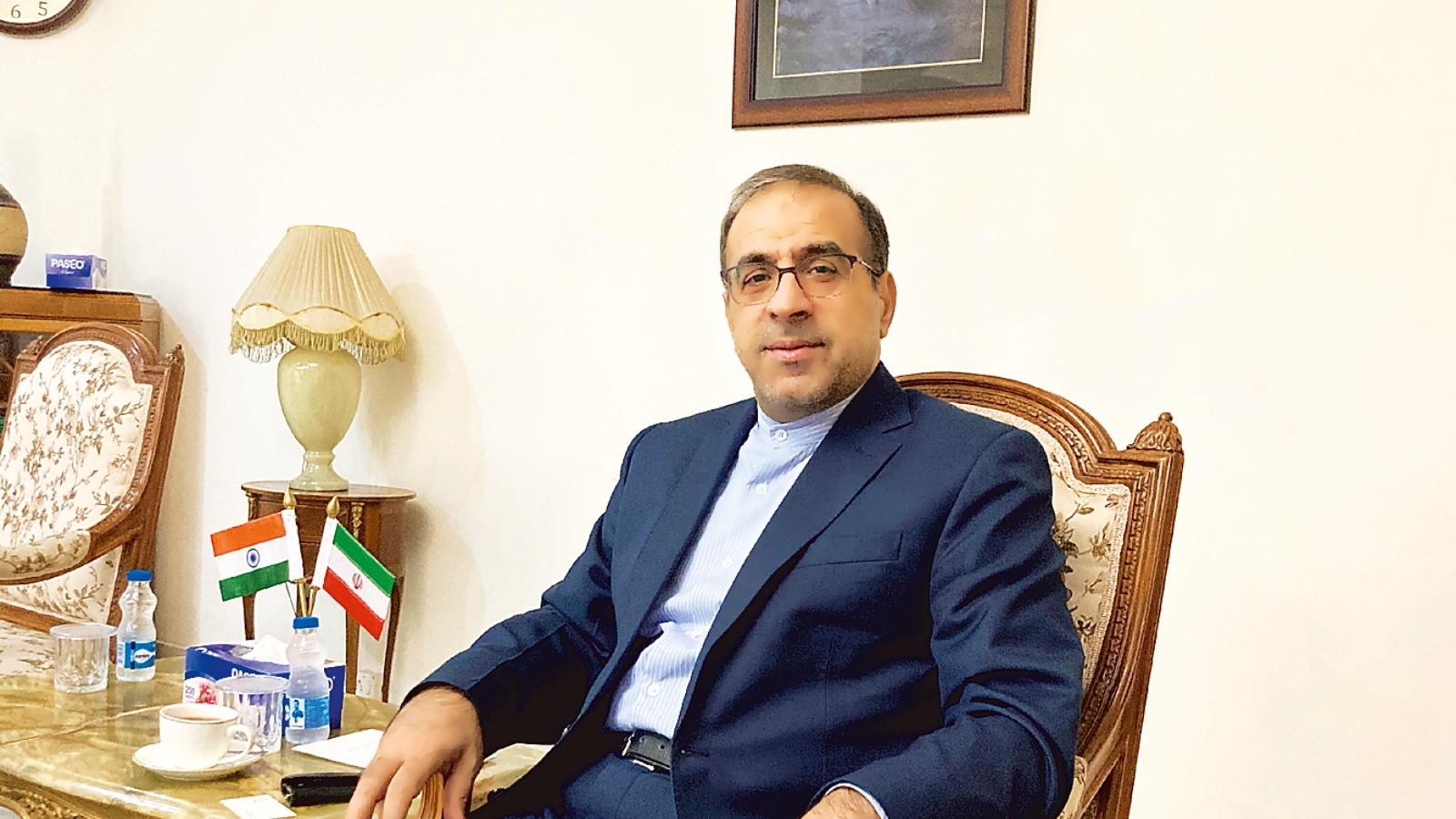In the midst of the ongoing conflict between Israel and Hamas, which has escalated tensions in West Asia, Iranian Envoy to India, Iraj Elahi, has highlighted India’s potential to play a crucial role in mediating a ceasefire.
As a nation with strong diplomatic ties across the region, Elahi believes India can help bring both sides to the table for dialogue and de-escalation. This perspective comes as the conflict expands into neighboring countries like Lebanon and Syria, with significant humanitarian challenges mounting on both sides.
India’s position as a neutral power and its historical support for a two-state solution positions it uniquely to help broker peace in this volatile region.
India’s Diplomatic Role in West Asia
India has a long-standing tradition of diplomatic engagement with West Asia. It maintains positive relations with Israel, Iran, and various Arab states, which is why Iran sees India as a key player in advocating for peace in the region.
Ambassador Elahi points out that India’s neutral stance on the Israel-Hamas conflict, along with its call for humanitarian assistance and support for a two-state solution, underscores its balanced approach.
Read : Iran’s Top Military Chief Esmail Qaani Suspected to Be an Israeli Spy
The ambassador emphasized that India could leverage its diplomatic clout to convince Israel to agree to a ceasefire. He stressed that the conflict is no longer just an isolated event between Israel and Hamas; it has spread across borders, pulling in Lebanon and Syria, and threatening to further destabilize the region.
Read : Satellite Photos Show Iran Expanding Missile Production: Assessed by American Researchers
According to Elahi, “The expansion of the tension is not to the benefit of any regional countries and even the international economy.” Given these developments, India’s involvement is more critical than ever.
Elahi’s belief that India can play a more active role comes from its unique relationships with both Israel and Iran, as well as its growing influence on the global stage. With India advocating for de-escalation and peace, there is hope that it could help calm the situation, which would benefit not only the region but also global stability.
Elahi sees India’s ability to navigate complex diplomatic situations as an asset in pushing for a ceasefire and promoting dialogue among the conflicting parties.
Humanitarian Concerns and the Need for a Ceasefire
One of the most pressing issues Elahi raised is the disproportionate response by Israel to Hamas’ initial attack. He acknowledged that while some countries, including India, called the attack by Hamas a terrorist act, the subsequent retaliatory strikes by Israel have caused significant humanitarian suffering in Gaza.

The ambassador pointed out that in response to the deaths of 1,000-1,200 Israelis in the initial Hamas attack, the casualties in Gaza have now reached over 42,000. He questioned whether such a response is proportionate, stating that for every Israeli killed, around 40 Palestinians have lost their lives.
This humanitarian crisis is not only a point of concern for Iran but for many international actors. The ongoing bombardment of Gaza, the destruction of civilian infrastructure, and the increasing number of casualties have raised alarms globally.
Even the United States, traditionally a staunch ally of Israel, and countries like France have called for a ceasefire. However, Elahi criticized these calls as lacking substance, arguing that real actions need to be taken to press Israel into halting its military operations.
For India, which has expressed support for humanitarian assistance to Gaza, this situation presents an opportunity to advocate more strongly for a ceasefire. Ambassador Elahi emphasized that a ceasefire would allow the “dust to settle,” creating space for dialogue and a possible long-term solution.
He also suggested that India could use its influence to mediate talks between the various parties involved, including Israel, Hamas, Iran, and Lebanon, to prevent further escalation.
India’s Position on the Two-State Solution
India has long supported the two-state solution as the only viable resolution to the Israel-Palestine conflict. This stance remains unchanged, even as tensions have escalated in the region.
Prime Minister Narendra Modi, shortly after the Hamas attack on October 7, reiterated India’s support for Israel while also calling for the establishment of a sovereign Palestinian state. India’s position is based on its historical ties to the Non-Aligned Movement, its support for Palestinian self-determination, and its strong relationship with Israel.
Ambassador Elahi acknowledged India’s balanced stance but urged the country to take a more proactive role. “India’s position is rational,” he said, “but as a diplomat, I believe that India can play a more active role. India can support a ceasefire.
India can convince Israel for a ceasefire or de-escalation.” This statement highlights Iran’s confidence in India’s ability to navigate the complex geopolitical landscape of West Asia.

Elahi’s call for India to take on a larger role comes at a time when India’s global influence is rising. With its growing economy and increasing diplomatic engagement through platforms like BRICS, the United Nations, and the G20, India is in a strong position to contribute to global peace efforts.
The ambassador also pointed out that India’s relations with both Israel and Iran, as well as its ties to Arab states, provide it with a unique advantage in mediating the current crisis.
The ambassador’s vision for India’s involvement goes beyond just advocating for a ceasefire. He sees India as playing a strategic role in shaping the future of West Asia by promoting stability and peace in the region.
As the conflict continues to evolve, India’s diplomatic actions could have a lasting impact on the trajectory of the crisis and its eventual resolution.
India-Iran Bilateral Relations and Future Collaboration
While discussing the broader geopolitical situation, Ambassador Elahi also touched on the strong bilateral ties between India and Iran. He highlighted that India and Iran share historical, cultural, and economic connections that make them natural partners.
The ambassador underscored that both nations should work towards elevating their relationship to a strategic level, particularly through projects like the Chabahar port and the International North-South Transport Corridor (INSTC).
Chabahar port, in particular, is seen as a vital asset for both countries. For India, it provides an alternative route to access Central Asia and Europe, bypassing Pakistan.
For Iran, it serves as a gateway to international markets. Elahi confirmed that there are no major challenges in the Chabahar project, and the main contract between India and Iran has been signed, with both sides committed to its implementation.

Elahi also expressed optimism about future collaborations, noting that the Iranian side is working hard to connect Chabahar to the national railway network, which is essential for its full activation. He emphasized that India’s diversification of its trade routes through Chabahar and the INSTC is crucial for strengthening its economic ties with not just Iran but the broader region.
As tensions in West Asia continue to escalate, Iran’s Ambassador to India, Iraj Elahi, has called on India to take a more active role in mediating a ceasefire and promoting de-escalation. With its strong diplomatic ties across the region, India is uniquely positioned to influence the situation positively.
The humanitarian crisis in Gaza, the broader regional implications of the conflict, and India’s long-standing support for the two-state solution all point to the need for India to step up its efforts in promoting peace.
At the same time, India’s growing strategic relationship with Iran, particularly through projects like Chabahar, highlights the broader potential for collaboration between the two nations.
let’s enjoy few years on earth with peace and happiness….✍🏼🙏

